By Rick Brannan
A Japanese method of preserving wood by charring with fire
Like most urban homesteaders, I live on a small parcel of earth. Living small means utilizing every square foot of ground to produce food for the table. Four foot square garden beds work best for my needs. For me, a garden is for saving money, not spending money, therefore my beds cost me next to nothing. Some old pallets and some galvanized nails are all that is needed for some very functional garden beds.
The only issue with pallets is that over a few years they succumb to the ravages of rot and termites. I like things natural, so I don’t seal the wood with sealants or paints. I prefer not to have chemicals leaching into the soil where I grow food to feed my family.
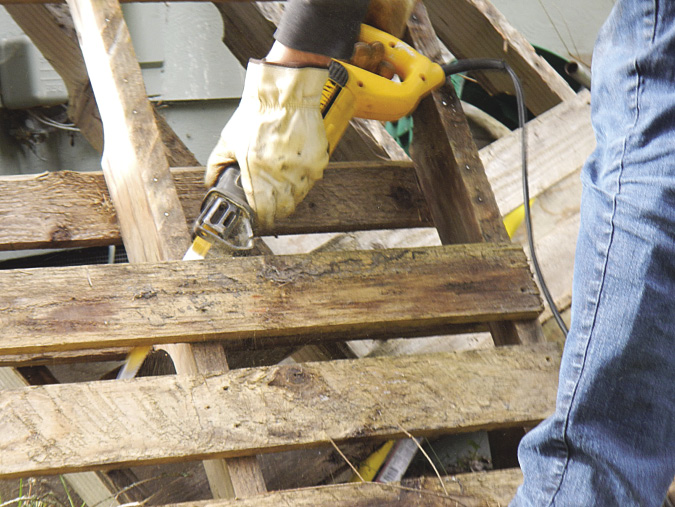
While researching different methods for preserving wood without creosote or arsenic, my son Peter told me about something he has been using in Michigan for his outside projects called yakisugi. “Yaki” is a Japanese word meaning to burn or cook with fire, and sugi is cedar. This method is traditionally used with cedar or cypress, both long-lasting woods. In the west, yakisugi is also called shou sugi ban, although the Japanese kanji is written the same.
Yakisugi is an ancient method of preserving wood by charring the outer layer of the wood. This has a threefold benefit for garden beds. One is that it burns off the soft absorbent outer celluloid material that soaks up water like a sponge allowing it to soak into the wood. Charring transforms that layer into a hardened charred layer which is naturally water resistant. There are buildings in Japan with yakisugi treated siding that are 80 years old or more with no signs of rot or decay.
Another benefit of this outer layer is that insects like termites don’t like it. Slugs and snails are also repelled. Fire is the enemy of most living things in nature and charred wooden surfaces seem to form a natural barrier for hungry pests. As with many remedies, charring is not 100 percent effective, but it seems to help. A third benefit of yakisugi is that the wood is charred black. With small raised beds, the dark color absorbs the sun’s radiant energy which helps warm the soil. Anyone who plants their tomato plants in an old tire is already aware of effects of passive solar energy. Plants like warm soil.
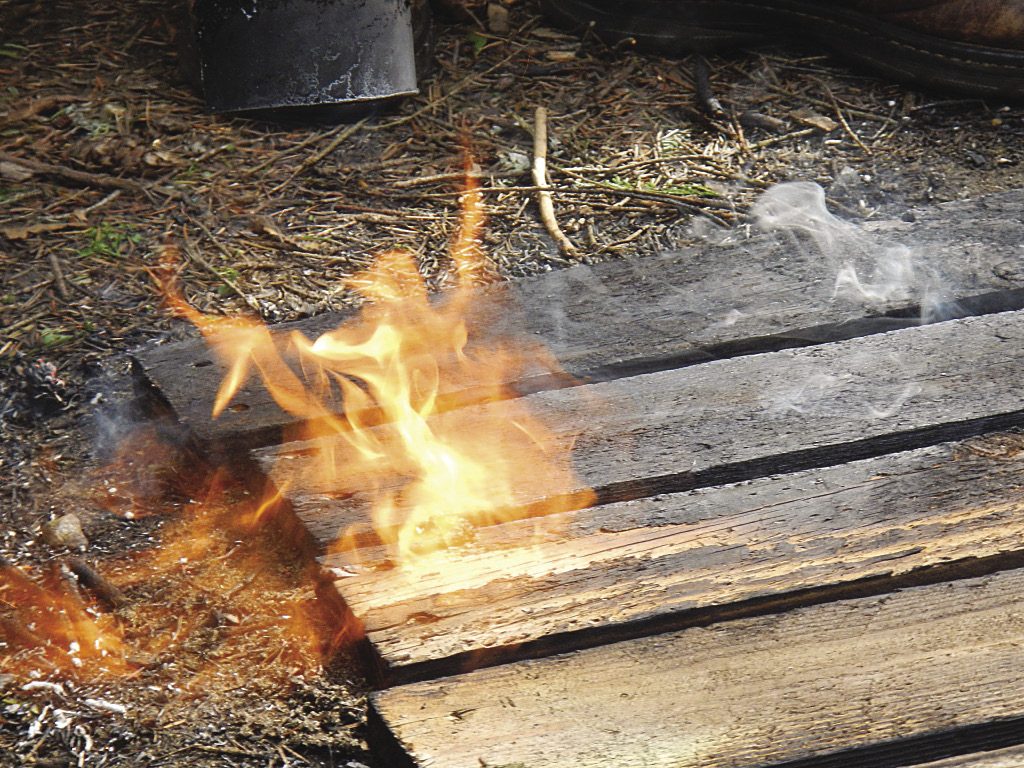
There is one more benefit of yakisugi, and that is that any kind of wood works. Free pallets are readily available and are already the right size for a four foot square garden bed.
The first order of business is dismantling a pallet. I have tried all the methods of prying them apart which nearly always results in the boards splitting, rendering them only good for kindling. I have found that what works the best is the greatest invention since the flush toilet, the sawsall or reciprocating saw. A reciprocating saw with a long blade slices through the nails like butter. Since they are being used for garden beds, I don’t bother removing the cut nails.
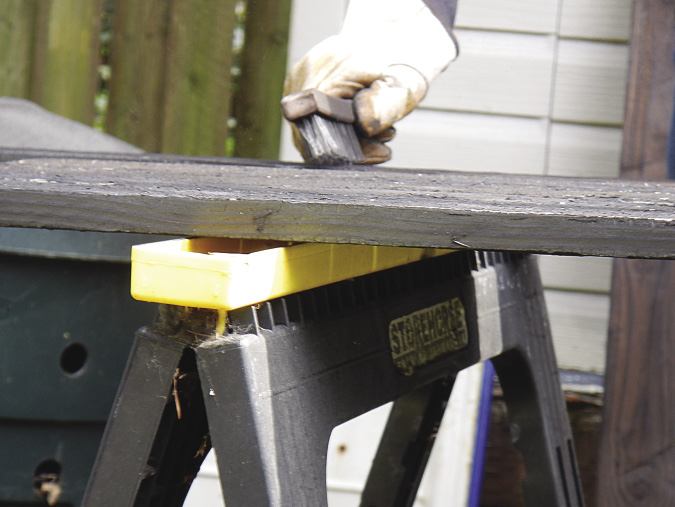
Burning can be done in many different ways, from dragging the boards slowly through a fire pit, to burning them with a propane torch. I prefer the torch since it is faster, easier to control and takes less time to set up. I purchased my torch, “The Hot Max” on Amazon for $43. It connects directly to my BBQ propane tank which is refillable.
The yakisugi process is quick and easy. I lay the boards out side by side with a gap between each board to allow the sides to char on the first pass. Then flop the boards over and char the other side.
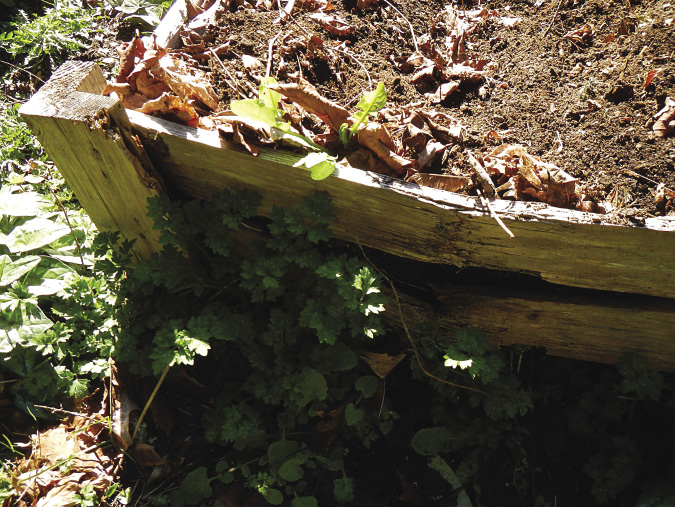
Next, move the boards to saw horses and brush with a wire brush. This allows the charred dust to fill and seal the wood fibers. Just a light scraping is all that is necessary.
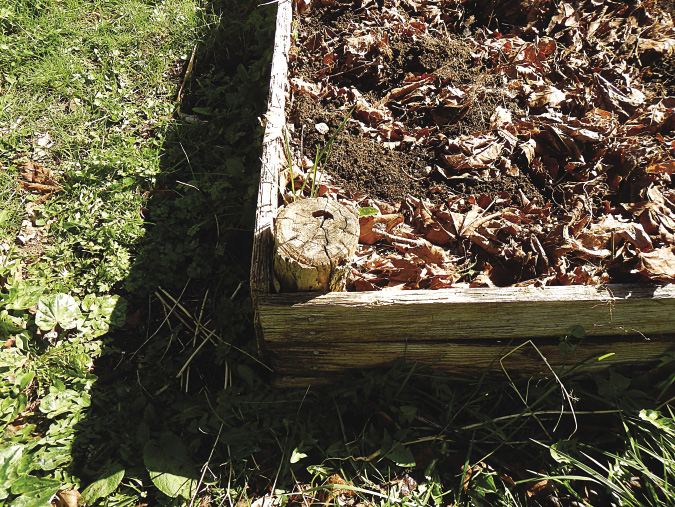
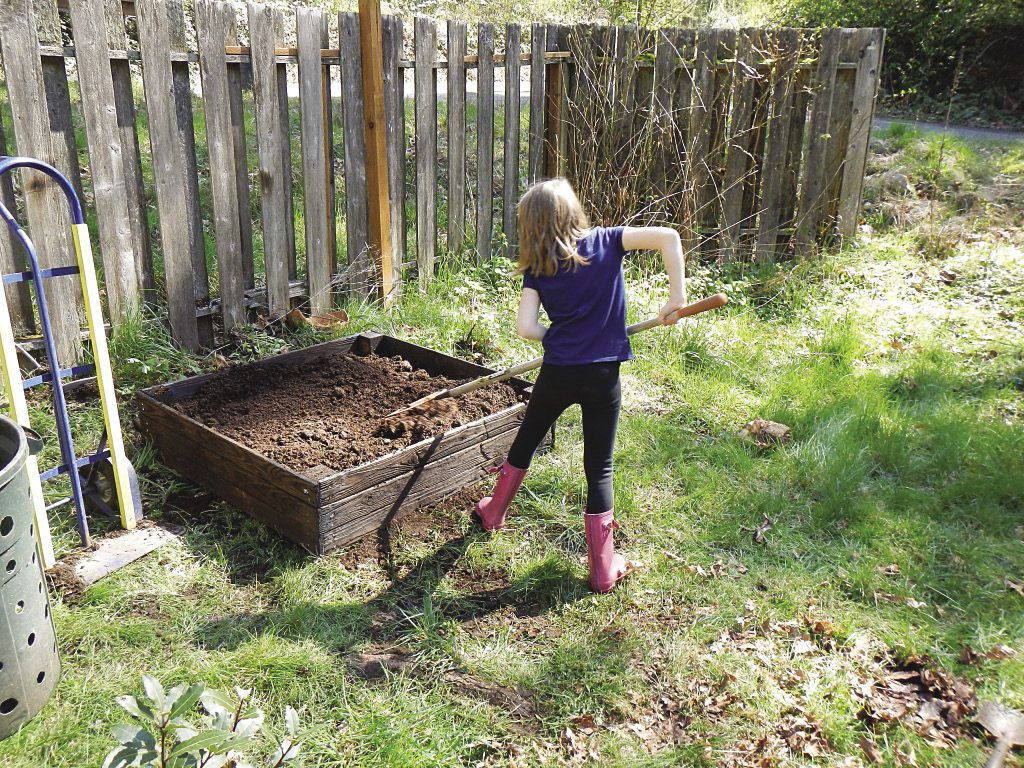
Assembly is simple and quick. I cut four 12-inch corner pieces, 4×4 scraps work the best. However, locust tree limbs will last for a very long time since they are not on the termites’ menu. There are foundations of old farm houses made from locust logs sitting directly on the dirt that are have stood for a hundred years. I char the 4x4s and nail the bed together with galvanized nails. I don’t bother to char the locust.
I make my beds 12 inches deep because that’s the width of three pallet boards. It is deep enough for root veggies like beets and carrots and is easily moved around as needed. These beds are sturdy, warm, simple to build, will last for many seasons, and are easy on the wallet.

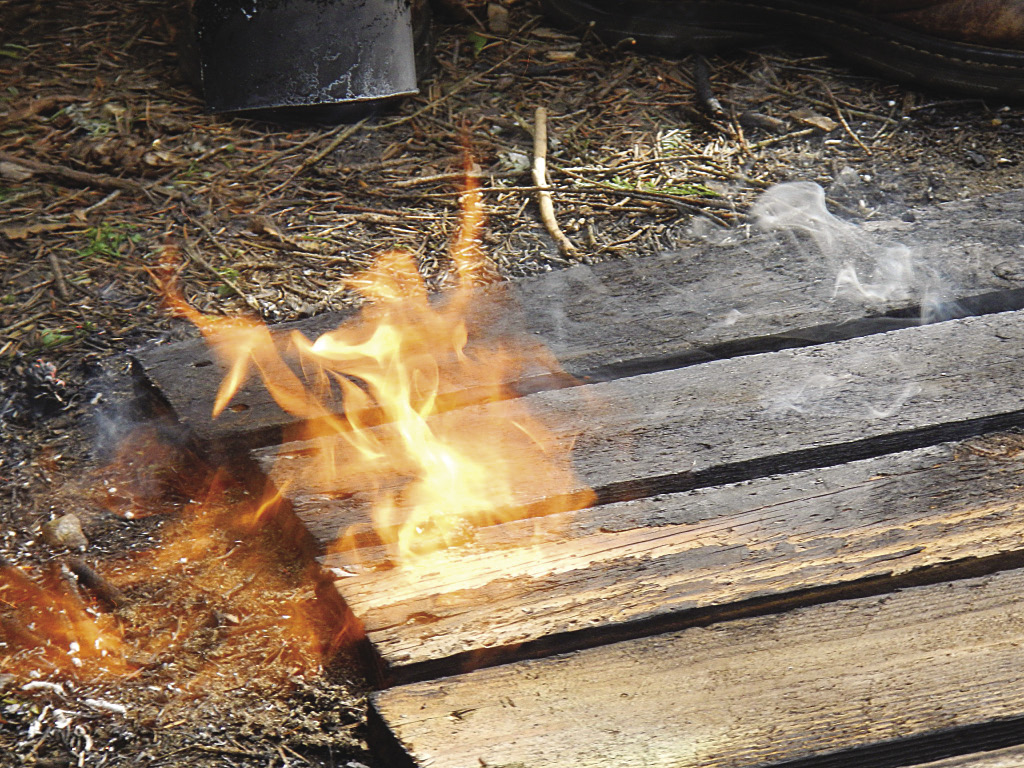
Did you seal your wood with anything after you charred it? If not, how are they holding up?
Fun & interesting read, great picture of the young girl at work. No you do not need to brush the outer layer off, he is just spreading the charred wood a bit.
Do you have to brush the outer burnt layer off? Couldn’t you just leave it on?